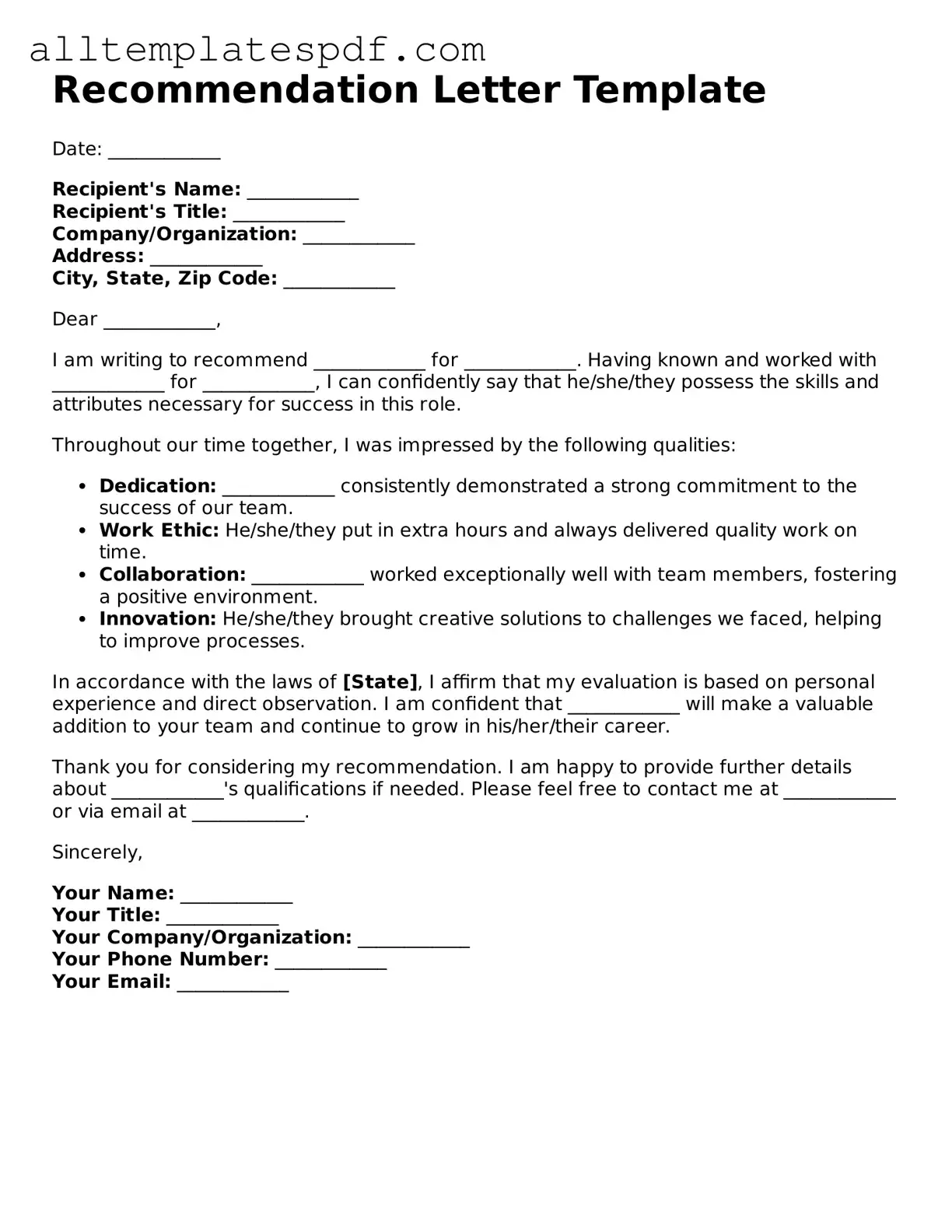Attorney-Approved Recommendation Letter Template
A Recommendation Letter form is a document used to gather information and insights about an individual from someone who can speak to their qualifications, character, and experiences. This form serves as a valuable tool for job applications, college admissions, or any situation where a personal endorsement is beneficial. To ensure a smooth process, consider filling out the form by clicking the button below.
Open Editor
